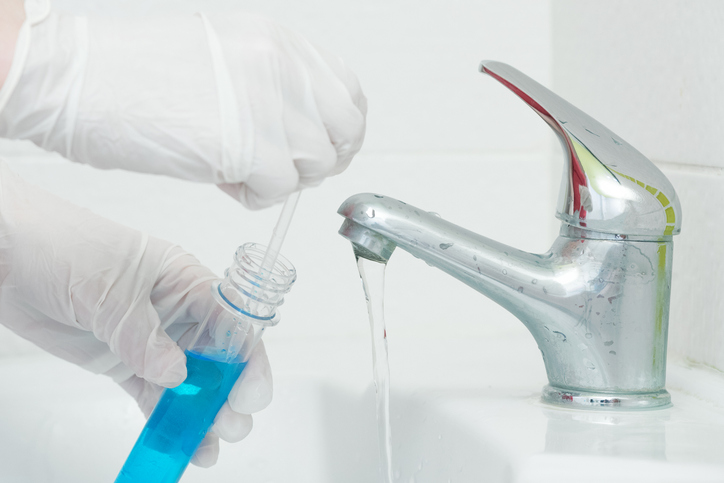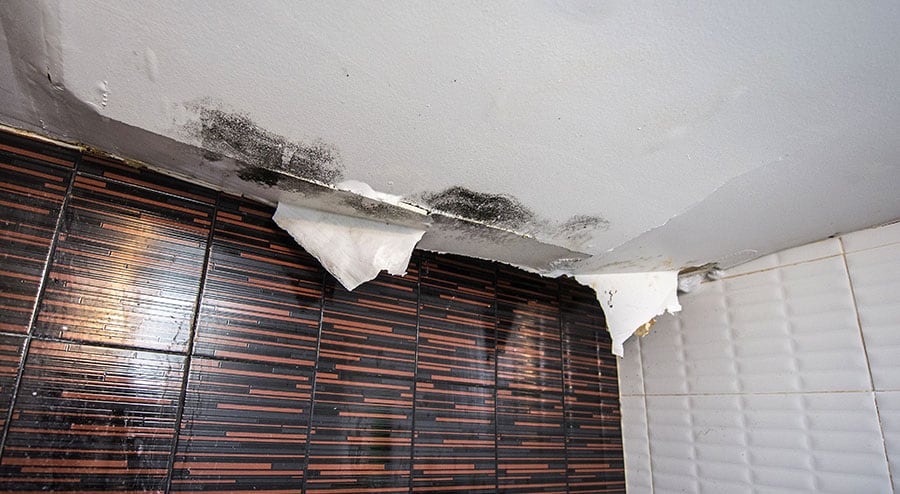In the realm of modern living, where clean and safe water is fundamental to our well-being, the importance of preventing home water contamination looms ever larger. The purity of our drinking water can be compromised by a myriad of factors, from environmental pollutants to aging infrastructure. This pressing concern underscores the necessity of vigilant testing and effective safeguarding measures.

Understanding Home Water Contamination
Water contamination is a significant concern that can jeopardize the safety and health of individuals and families. This section delves into the various aspects of home water contamination, including its common sources, potential health risks, and the specific impact of bacteria, heavy metals, and chemicals on water safety.
Common Sources Of Water Contamination
Water contamination arises from a variety of sources that can compromise the purity of drinking water. Agricultural runoff, stemming from the use of pesticides, herbicides, and fertilizers, poses a significant threat as these chemicals can infiltrate water sources through rain or irrigation. Industries, too, contribute to water pollution by releasing effluents containing harmful chemicals and heavy metals into water bodies. Aging or poorly maintained plumbing systems introduce contaminants like lead, rust, and sediment, particularly in older homes. Inadequate wastewater treatment and disposal, whether from domestic or industrial sources, can also lead to the contamination of groundwater or surface water, thereby affecting the quality of water available to households.
Malfunctioning septic systems can leak disease-causing pathogens and pollutants into the groundwater, which in turn may find their way into drinking water wells. Even naturally occurring substances, such as radon and bacteria, can contribute to the contamination of residential water supplies. Understanding these diverse sources is crucial for effectively addressing and preventing water contamination at home.
Health Risks Of Consuming Contaminated Water
Consuming contaminated water can have serious health repercussions, ranging from immediate gastrointestinal discomfort to long-term, chronic ailments. Waterborne pathogens, such as bacteria, viruses, and parasites, can lead to acute infections of the stomach and intestines, manifesting as symptoms like diarrhea, nausea, and vomiting. However, the consequences extend beyond the short term. Chronic exposure to certain contaminants, notably heavy metals like lead, can result in severe health issues over time. Such metals, even at low concentrations, accumulate in the body and contribute to developmental delays, cognitive impairments, and damage to organs.
Some waterborne chemicals have been linked to an elevated risk of cancer, particularly after prolonged exposure. Compromised water quality can also suppress the immune system, making individuals more vulnerable to infections and diseases, while certain contaminants possess the ability to interfere with reproductive health and contribute to developmental problems, especially in children. Recognizing these health risks underscores the importance of safeguarding the purity of our drinking water.
According to the Environmental Protection Agency (EPA), lead exposure from drinking water can cause developmental delays, learning disabilities, and behavioral issues in children, as well as kidney problems and high blood pressure in adults. Preventing lead contamination through regular testing and proper treatment methods is crucial for ensuring safe drinking water at home.
Impact Of Bacteria, Heavy Metals, And Chemicals On Water Safety
The presence of specific contaminants significantly impacts the safety of water intended for consumption. Bacteria and pathogens, such as E. coli and Giardia, pose immediate threats, causing gastrointestinal illnesses and severe intestinal infections. Meanwhile, heavy metals, including lead, mercury, and cadmium, can infiltrate water through pipes or natural sources. These metals, even at low concentrations, accumulate in the body over time, leading to a host of health concerns.
Chlorine, commonly used for water disinfection, can react with organic matter to form disinfection byproducts like trihalomethanes, which carry potential health risks. Nitrates and nitrites, frequently originating from fertilizers or septic systems, can interfere with oxygen transport in the blood, posing a particular risk to infants. Arsenic, a naturally occurring element, is another hazardous contaminant found in groundwater. Prolonged exposure to arsenic has been associated with skin, bladder, and lung cancers, along with various other health complications. Understanding the distinct impact of bacteria, heavy metals, and chemicals on water safety underscores the necessity of comprehensive water testing and effective treatment methods to ensure the health and well-being of households.
Testing Your Home Drinking Water
Regular water testing stands as an essential practice for every household, regardless of its source of water. Monitoring your water’s quality provides early detection of any potential issues, allowing for prompt remediation and prevention of health risks. It is a proactive measure that empowers homeowners to take control of their water supply’s safety. Even if your water appears clear and odorless, hidden contaminants may still be present. By establishing a routine testing schedule, you can establish a baseline for your water’s quality and detect any changes that may occur over time.
Recommended Frequency For Well Water Testing
For households reliant on well water, the frequency of testing takes on added significance. Experts recommend testing well water at least annually. However, certain circumstances necessitate more frequent testing. If your well is situated in an area with intensive agriculture, industries, or other potential sources of contamination, it’s advisable to conduct tests more frequently – potentially every six months. Seasonal changes and environmental events can impact well water quality, making regular testing even more crucial.
Role Of Municipal Water Treatment Plants
Municipal water treatment plants play a pivotal role in ensuring the safety of public water supplies. These facilities employ rigorous processes to treat and disinfect water, adhering to strict regulatory standards. While municipal water is generally subjected to regular testing and treatment, homeowners should remain vigilant. The infrastructure of water distribution systems, aging pipes, or unexpected events can compromise water quality after it leaves the treatment plant. Regular testing provides an additional layer of assurance for homeowners using municipal water sources.
Testing Methods For Detecting Various Contaminants
Ensuring the purity of your home’s drinking water involves a precise understanding of testing methods that effectively identify a wide array of contaminants. These methods serve as diagnostic tools, enabling homeowners to pinpoint potential issues and take corrective measures.
Microbiological Testing
Microorganisms such as bacteria, viruses, and parasites can pose significant health risks when present in drinking water. Microbiological testing involves the collection of water samples that are then cultured in a laboratory environment. The growth of pathogens is monitored, allowing for the identification and quantification of harmful microorganisms. This testing is particularly vital for well water, as it helps determine if bacterial contamination from sources like septic systems or agricultural runoff is present.
Chemical Analysis
Chemical testing is a comprehensive approach to detecting a range of pollutants. Various chemical compounds, including nitrates, pesticides, volatile organic compounds (VOCs), and industrial chemicals, can infiltrate water sources. Chemical analysis involves using advanced techniques like chromatography and spectroscopy to identify and quantify these substances. It offers insights into potential sources of contamination and aids in designing targeted treatment strategies.
Heavy Metal Testing
Heavy metals such as lead, mercury, and arsenic can leach into water from natural sources or corroded pipes. Heavy metal testing employs sophisticated instruments like inductively coupled plasma-mass spectrometry (ICP-MS) or atomic absorption spectrometry to measure trace amounts of these elements. This method ensures accurate detection even at low concentrations, as heavy metals can accumulate in the body over time, causing chronic health issues.
pH And Alkalinity Testing
The pH level of water, indicating its acidity or alkalinity, plays a crucial role in determining its suitability for consumption and various household uses. High or low pH levels can impact water’s taste, corrosiveness, and its ability to dissolve metals. Alkalinity, on the other hand, measures the water’s capacity to resist changes in pH, contributing to its stability. Testing pH and alkalinity provides insight into the overall quality of water and helps assess potential corrosion risks within plumbing systems.
Total Dissolved Solids (TDS) Testing
TDS testing measures the concentration of dissolved substances in water, encompassing minerals, salts, metals, and more. Excessive TDS can affect water’s taste, texture, and overall palatability. TDS meters are commonly used to provide a quick assessment of water quality, serving as a preliminary indicator of potential contamination.
Identifying And Removing Specific Contaminants
The quest for pristine drinking water involves a comprehensive understanding of specific contaminants and the strategies employed to eliminate or mitigate their presence. This section delves into the dangers of lead contamination, the removal of chlorine and its byproducts, addressing pesticides and herbicides from agricultural runoff, and implementing strategies to prevent bacterial growth and cross-contamination.
The Dangers Of Lead Contamination And Its Health Effects
Lead contamination remains a significant concern due to its severe health implications, particularly in young children and pregnant women. Lead exposure can lead to developmental delays, cognitive impairments, and behavioral issues. Even low levels of lead in drinking water can pose risks, making its detection and removal paramount. To address lead contamination, homeowners can consider installing point-of-use filters specifically designed to remove lead, or they may opt for whole-house filtration systems to safeguard against lead exposure.
Removing Chlorine And Its Byproducts From Tap Water
Chlorine, a common disinfectant used in water treatment, plays a crucial role in eliminating pathogens. However, it can react with organic matter present in water to form disinfection byproducts (DBPs), such as trihalomethanes, which have been associated with health concerns. Removing chlorine and its byproducts enhances the taste and odor of water while reducing potential health risks. Activated carbon filters are effective in adsorbing chlorine and DBPs, resulting in cleaner and more palatable drinking water.
Addressing Pesticides, Herbicides, And Agricultural Runoff
The infiltration of pesticides and herbicides from agricultural runoff into water sources raises alarm due to their potential adverse effects on human health. These chemicals can find their way into groundwater or surface water, eventually reaching residential water supplies. Effective treatment methods involve advanced filtration techniques that target specific contaminants. In addition to home water treatment, advocating for responsible agricultural practices and supporting efforts to reduce runoff is crucial to preventing pesticide and herbicide contamination.
Strategies For Preventing Bacterial Growth And Cross-Contamination
The preservation of water safety hinges on a vigilant commitment to thwarting bacterial growth and cross-contamination within a household’s water supply. These strategies, encompassing proactive measures and effective practices, play a pivotal role in ensuring the purity of the water that flows from our taps.
Stagnation And Proper Storage: The Breeding Ground For Bacteria
Stagnant water provides an ideal breeding ground for bacteria to flourish. Containers left untouched for extended periods can inadvertently nurture bacterial growth. It is imperative to address this vulnerability by ensuring that water storage containers are regularly emptied, cleaned, and refilled to maintain a fresh and uncontaminated water supply. Moreover, improper storage, such as leaving containers exposed to sunlight or outdoor elements, can compromise water quality. Utilizing tightly sealed and food-grade containers for water storage minimizes the risk of contamination.
Maintaining Sanitary Plumbing Fixtures: A Line Of Defense
Unsanitary plumbing fixtures can contribute to bacterial proliferation and contamination. Faucets, showerheads, and other water-contacting surfaces can accumulate biofilm, a slimy substance that harbors harmful microorganisms. Regular cleaning and disinfection of these fixtures are paramount to prevent the buildup of biofilm and bacterial growth. Employing non-abrasive cleaners and disinfectants approved for use on water-related surfaces ensures that water delivery points remain sanitary and bacteria-free.
Practicing Hygiene: Handwashing And Equipment Sanitization
Hygiene practices extend beyond the bathroom and kitchen, encompassing water-related equipment and personal actions. Regular handwashing, particularly before handling water storage containers or coming into contact with faucets, reduces the likelihood of introducing bacteria into the water supply. Similarly, the sanitization of water-dispensing equipment, such as pitchers or dispensers, further mitigates the risk of cross-contamination. By incorporating these practices into daily routines, households fortify their defense against bacterial intrusion.
Water Treatment Solutions For Home Use
Ensuring the quality of the water that flows from our taps requires thoughtful consideration of various treatment methods. This section dives into the distinction between point-of-use and point-of-entry water treatment systems, the efficiency of activated carbon filters and UV purification, the comprehensive contaminant removal potential of reverse osmosis, and the impact of plumbing materials and water softening on water quality.
Understanding Point-Of-Use Vs. Point-Of-Entry Water Treatment Systems
The choice between point-of-use (POU) and point-of-entry (POE) water treatment systems hinges on the scope of water purification needed. POU systems are localized solutions that treat water at specific outlets, such as kitchen faucets or showerheads. These systems are cost-effective and target contaminants relevant to a particular outlet. In contrast, POE systems treat water as it enters the home, ensuring that all faucets and appliances receive treated water. POE systems are comprehensive, offering protection against contaminants across the entire household. Deciding between POU and POE systems depends on the types of contaminants present, household water usage patterns, and budget considerations.
Effective Water Treatment With Activated Carbon Filters And UV Purification
In the pursuit of pristine and safe drinking water, two stalwart technologies stand out: activated carbon filters and ultraviolet (UV) purification. These effective water treatment methods have earned their reputation for enhancing water quality and ensuring the health and well-being of households.
Activated Carbon Filters: Elevating Water Quality Through Adsorption
Activated carbon filters are a tried and true solution in the world of water treatment. The secret to their effectiveness lies in their remarkable ability to adsorb impurities from water. The porous structure of activated carbon provides an expansive surface area where contaminants adhere, effectively removing them from the water. One of the notable achievements of activated carbon filters is the removal of chlorine, a commonly used disinfectant in water treatment that can impart an unpleasant taste and odor to tap water. By eliminating chlorine, activated carbon filters deliver a more palatable and refreshing drinking experience.
Moreover, activated carbon filters exhibit proficiency in tackling volatile organic compounds (VOCs), a diverse group of chemicals that can find their way into water supplies through various sources. These compounds, often associated with industrial processes or urban runoff, can pose health risks when consumed. The affinity of activated carbon for VOCs ensures their successful removal, contributing to safer and cleaner water.
Unwanted odors, another deterrent to water enjoyment, meet their match with activated carbon filters. The porous matrix of activated carbon engulfs odor-causing molecules, leaving water devoid of unpleasant smells. This transformation in odor perception enhances not only the taste of water but also the overall satisfaction of consuming it.
UV Purification: Harnessing Light For Microbial Disinfection
In the realm of microbial disinfection, ultraviolet (UV) purification shines as a remarkable technique that utilizes the power of light to neutralize harmful microorganisms. At the core of UV purification is the principle of disrupting the DNA of bacteria, viruses, and parasites, rendering them incapable of reproducing and thus rendering them harmless. This disruption occurs when these microorganisms absorb UV light, causing damage to their genetic material.
UV purification serves as a potent safeguard against waterborne pathogens that can lead to gastrointestinal illnesses and other health complications. Its efficacy in eradicating a wide range of microorganisms makes it a preferred method for enhancing water safety, particularly in areas where microbial contamination is a concern.
One of the notable advantages of UV purification is its chemical-free nature. Unlike certain water treatment methods that involve the addition of chemicals, UV purification leaves no chemical residue in the water. This ensures that the treated water retains its natural properties while being free from microbial threats.
Exploring Comprehensive Contaminant Removal With Reverse Osmosis
Reverse osmosis (RO) emerges as a robust solution for households seeking comprehensive contaminant removal. RO employs a semipermeable membrane that allows only water molecules to pass through while blocking contaminants. This process effectively removes bacteria, viruses, heavy metals, dissolved salts, and other impurities. RO systems ensure the production of high-quality, purified water, making them particularly appealing for households facing diverse contamination challenges. It’s worth noting that while RO is a potent purification method, it may also remove beneficial minerals from the water, necessitating mineral supplementation if desired.
Influence Of Plumbing Materials And Water Softening On Water Quality
The unseen infrastructure that delivers water to our homes wields a significant influence on the safety and quality of the water we consume. Plumbing materials and the practice of water softening each play a crucial role in shaping the characteristics of our tap water, necessitating careful consideration and proactive management.
Impact Of Plumbing Materials: A Pathway To Contamination Or Purity
The composition of plumbing materials can have far-reaching consequences for water safety. Corroded or outdated pipes, often found in older homes, can introduce contaminants into the water supply. Among these, lead is of particular concern due to its potential to leach into the water. Lead exposure is associated with serious health risks, especially for vulnerable populations like children and pregnant women. To safeguard against this threat, homeowners are advised to choose lead-free plumbing materials and prioritize regular inspection and maintenance of their plumbing systems. Periodic checks for leaks, corrosion, and any signs of degradation ensure that water remains untainted as it travels from its source to the tap.
Balancing The Equation: Water Softening And Mineral Content
The natural presence of minerals like calcium and magnesium in water contributes to its hardness, a characteristic that impacts not only taste but also the efficiency of appliances and plumbing fixtures. While hard water is generally not harmful to health, it can create challenges ranging from reduced soap lathering to scale buildup in pipes and appliances. Water softening systems provide a remedy by removing or reducing mineral content, thus mitigating these issues. However, this process can sometimes result in an increase in sodium levels, a concern for individuals with sodium-restricted diets.
Achieving a balance between water softening and filtration is key to optimal water quality. Combining water softening with effective filtration methods ensures the removal of not only minerals but also potential contaminants, offering a comprehensive approach to water treatment. This balance addresses concerns related to both taste and health, resulting in water that is not only pleasing to the palate but also free from unwanted impurities.
Regulations, Education, And Safe Practices
The assurance of safe drinking water at home involves not only effective treatment methods but also a deep understanding of regulatory frameworks, education on safe water practices, and dispelling prevalent misconceptions. This section delves into the role of government regulations in ensuring residential drinking water safety, the significance of homeowner education for cultivating safe water practices, and the importance of clarifying common misconceptions about home water treatment.
Government Regulations Ensuring Residential Drinking Water Safety
Government agencies play a pivotal role in safeguarding residential drinking water. Regulatory bodies set stringent standards for water quality, ensuring that public water supplies adhere to specific guidelines. These standards encompass parameters like acceptable levels of contaminants, treatment methods, and testing frequencies. Agencies such as the Environmental Protection Agency (EPA) in the United States oversee water quality regulations and provide resources to help consumers understand the potential risks and measures to mitigate them. Compliance with these regulations ensures that water treatment facilities prioritize the removal of harmful substances, contributing to the overall safety of residential drinking water.
Importance Of Homeowner Education For Safe Water Practices
Empowering homeowners with knowledge about safe water practices is fundamental to maintaining water quality. Education fosters an understanding of potential contamination sources, effective treatment methods, and the significance of regular water testing. Homeowners should be aware of the specific risks associated with their water source, such as well water or municipal water, and should receive guidance on appropriate testing intervals and treatment options. Educated homeowners are better equipped to make informed decisions about water treatment systems, implement preventive measures, and respond promptly to any water quality issues.
Common Misconceptions About Home Water Treatment
Addressing misconceptions surrounding home water treatment is essential to promote accurate decision-making. Common misconceptions include beliefs that tap water is inherently safe, that water with a clear appearance is free from contaminants, or that boiling water is sufficient for purification. Additionally, some individuals may assume that all water filters are equal in their capabilities, overlooking the importance of selecting filters tailored to specific contaminants. Clearing up these misconceptions requires disseminating accurate information about the nuances of water treatment, emphasizing the need for comprehensive testing, and highlighting the effectiveness of various treatment methods in addressing specific concerns.
Conclusion
In the quest for safe and pristine drinking water within our homes, the importance of preventing water contamination through rigorous testing and effective treatment methods cannot be overstated. By understanding common sources of contamination, the health risks they pose, and the impact of various contaminants on water safety, homeowners can make informed decisions to protect their families. Regular water testing, whether from well sources or municipal supplies, serves as a proactive measure to detect potential issues early on. Embracing water treatment solutions such as activated carbon filters, UV purification, and reverse osmosis offers a multi-layered approach to enhancing water quality. Moreover, fostering awareness of government regulations, prioritizing education on safe water practices, and dispelling misconceptions are essential elements in maintaining a continuous flow of clean and safe drinking water.




